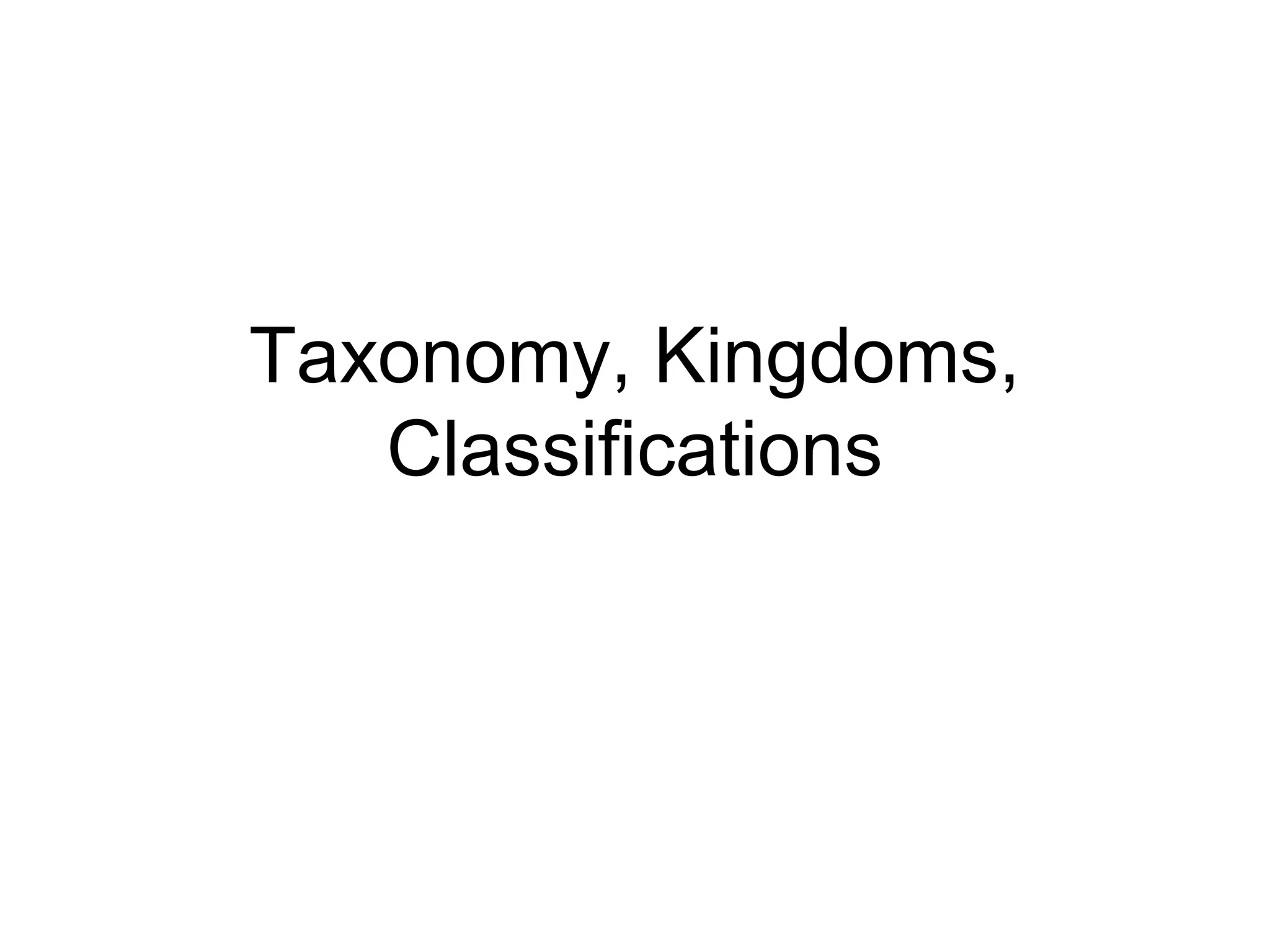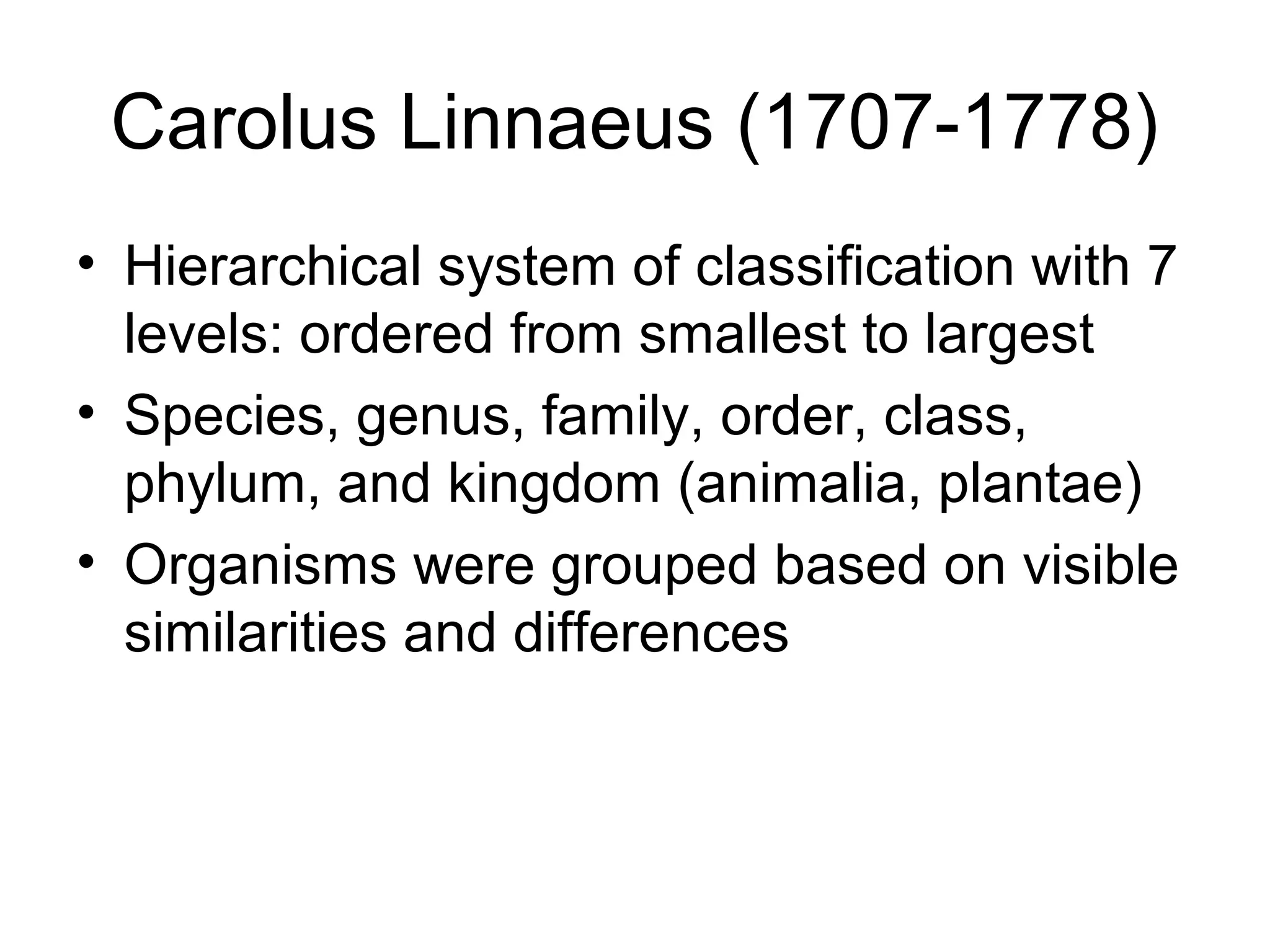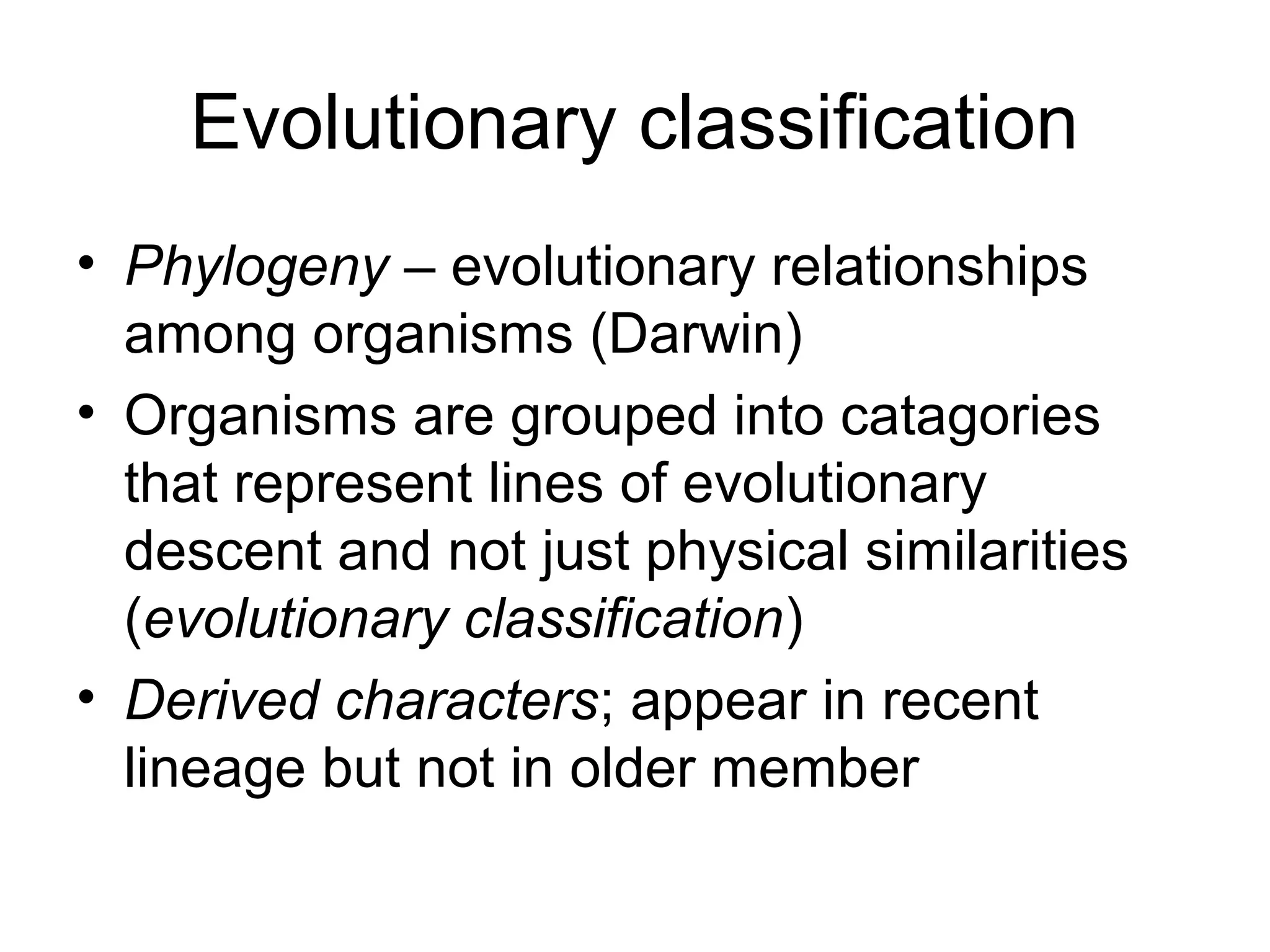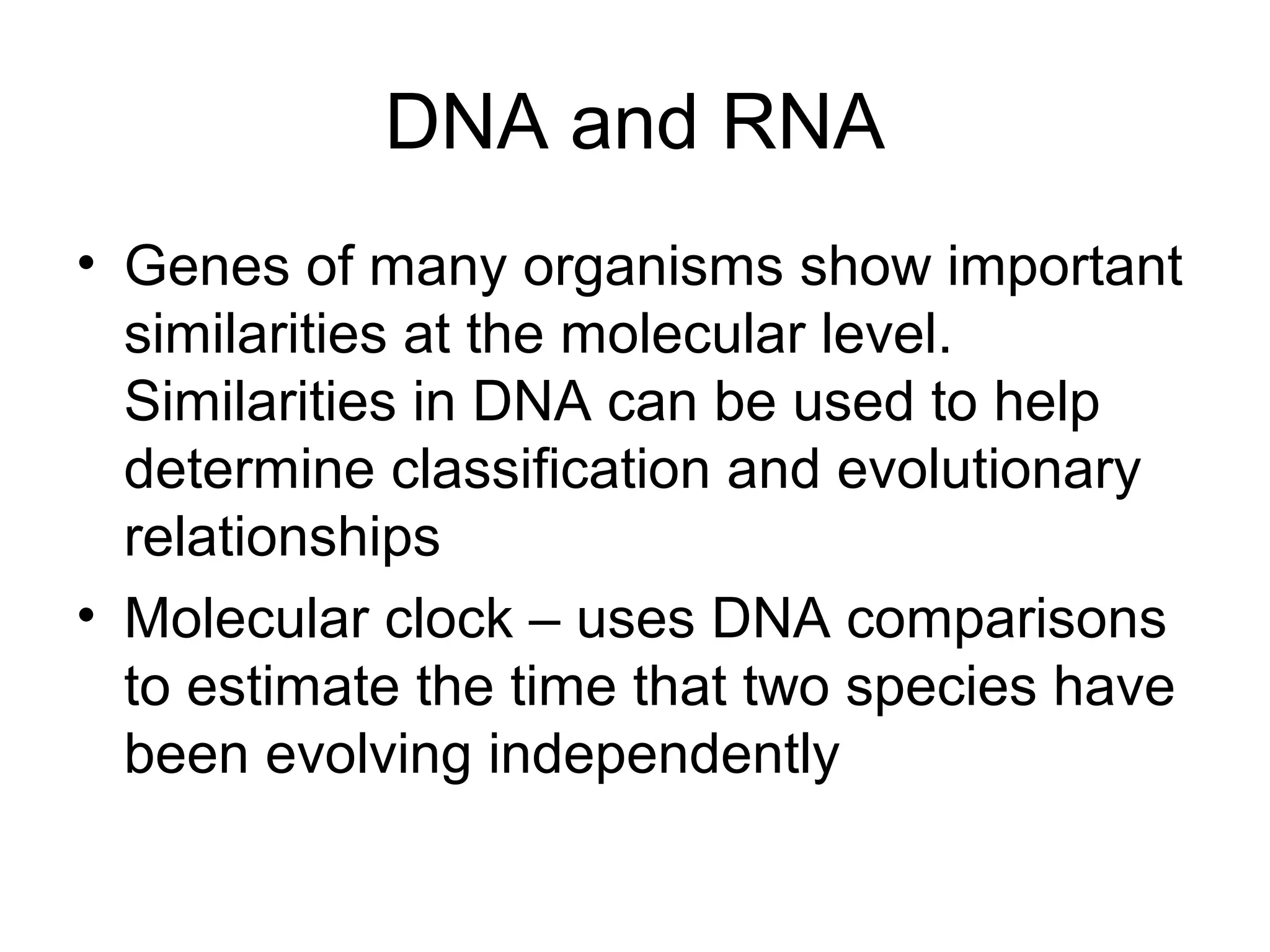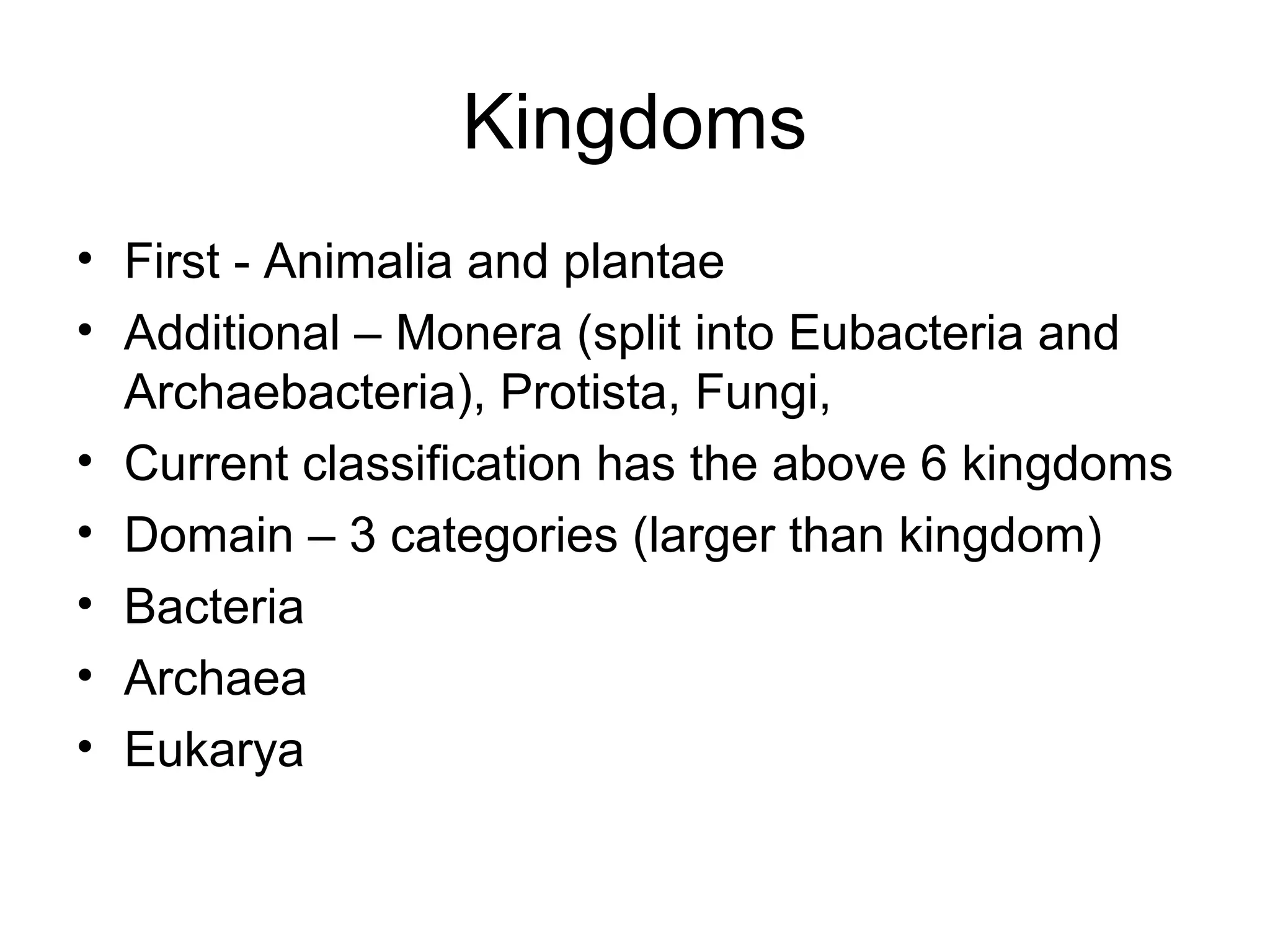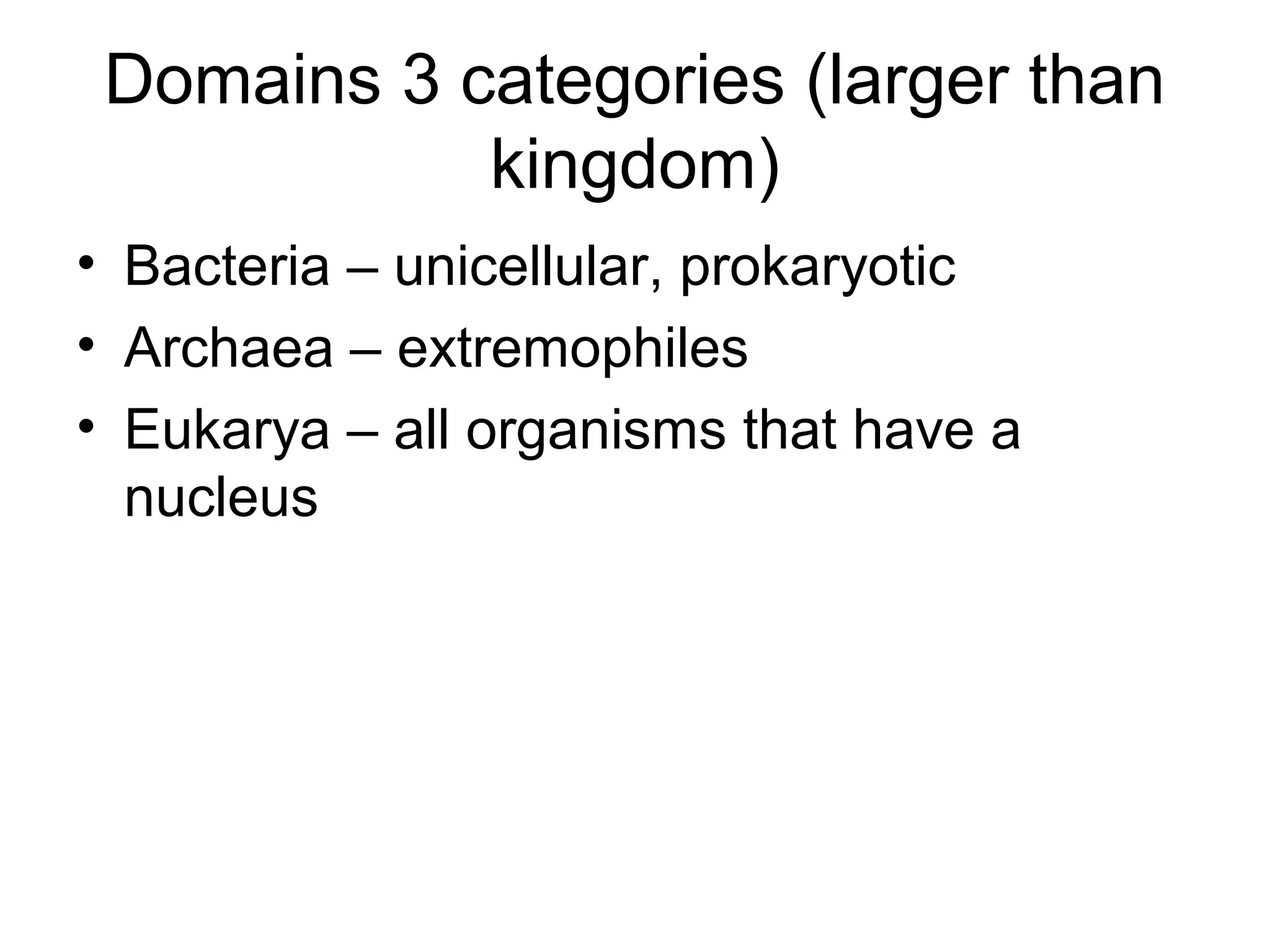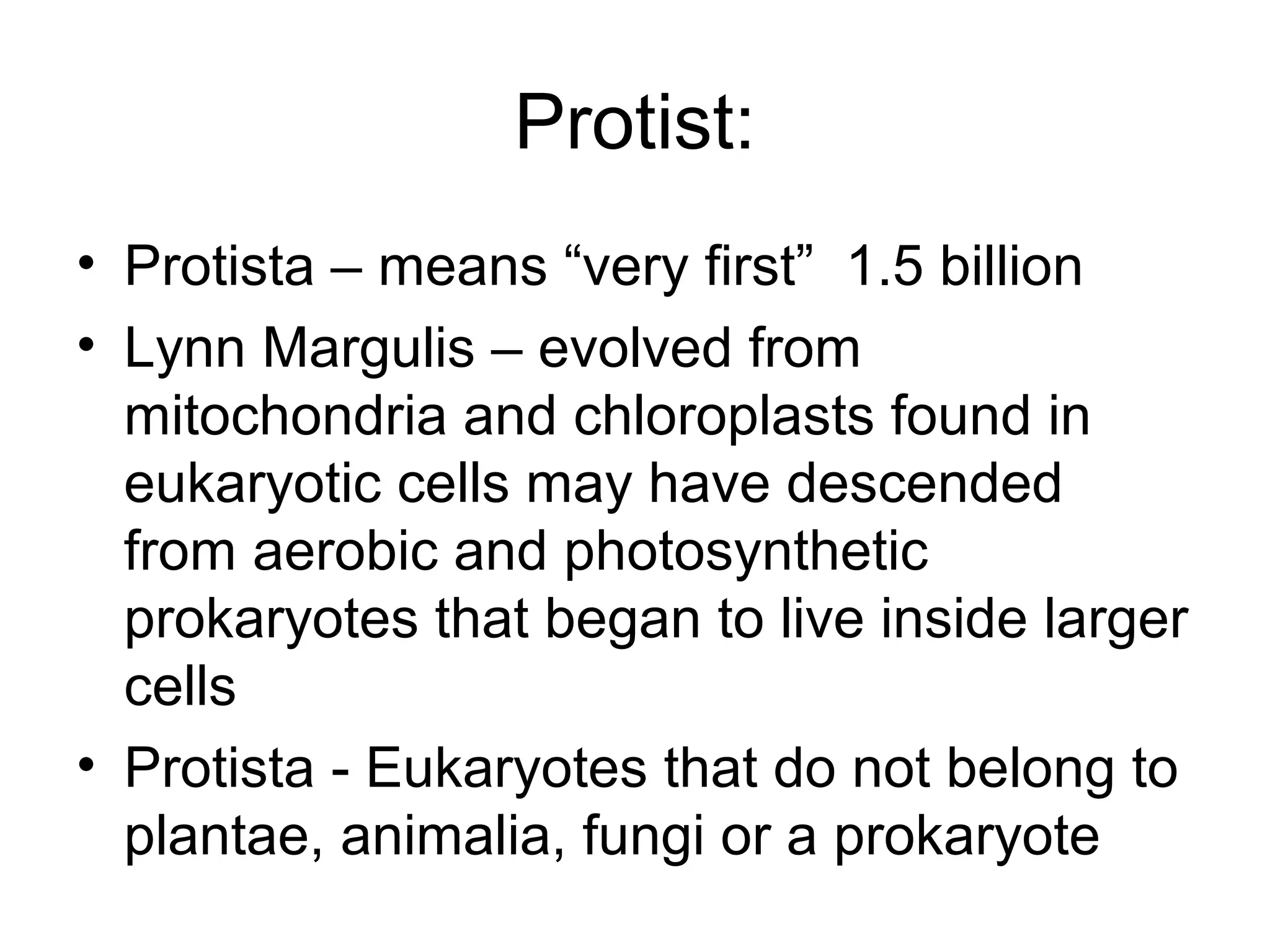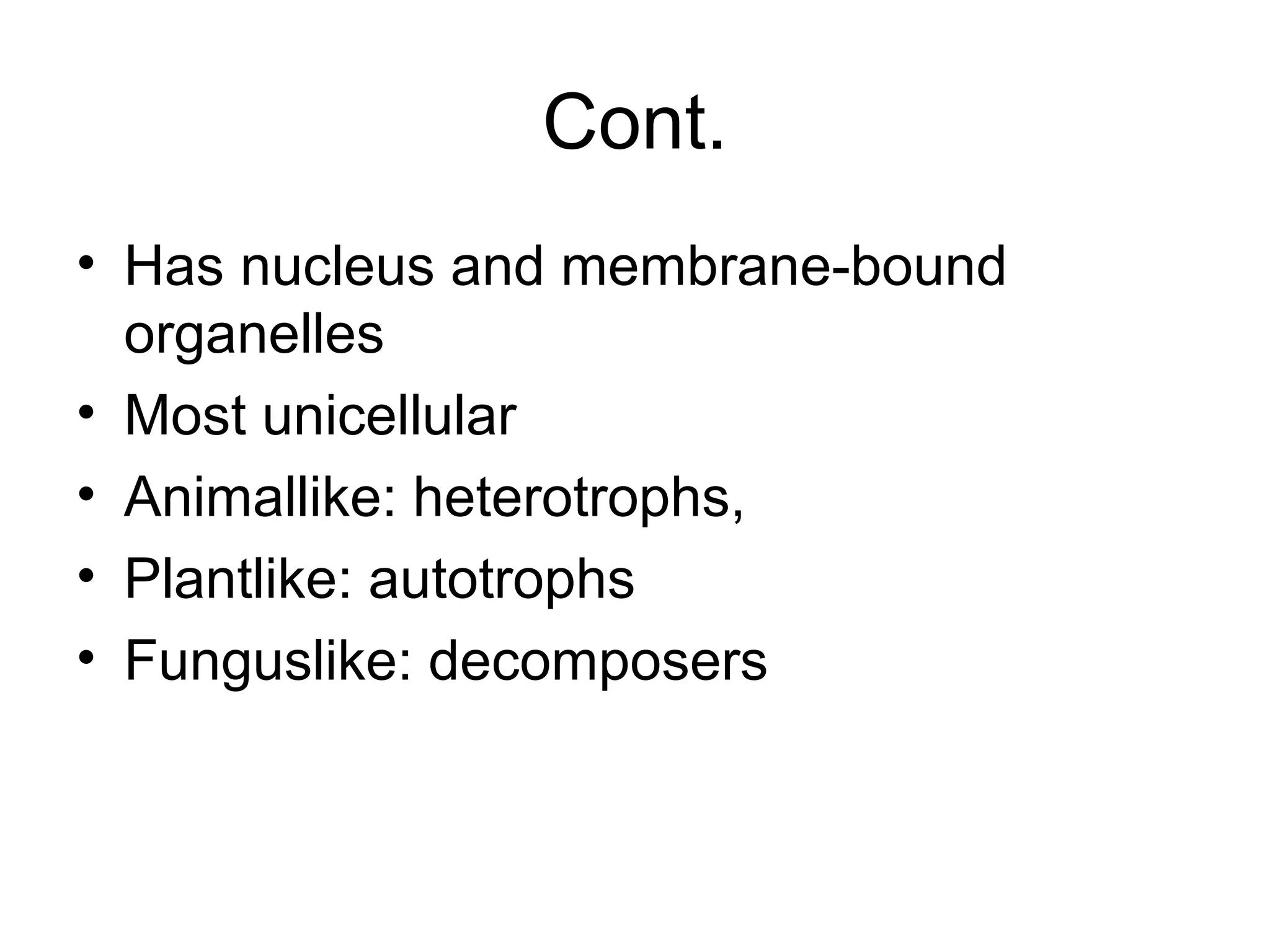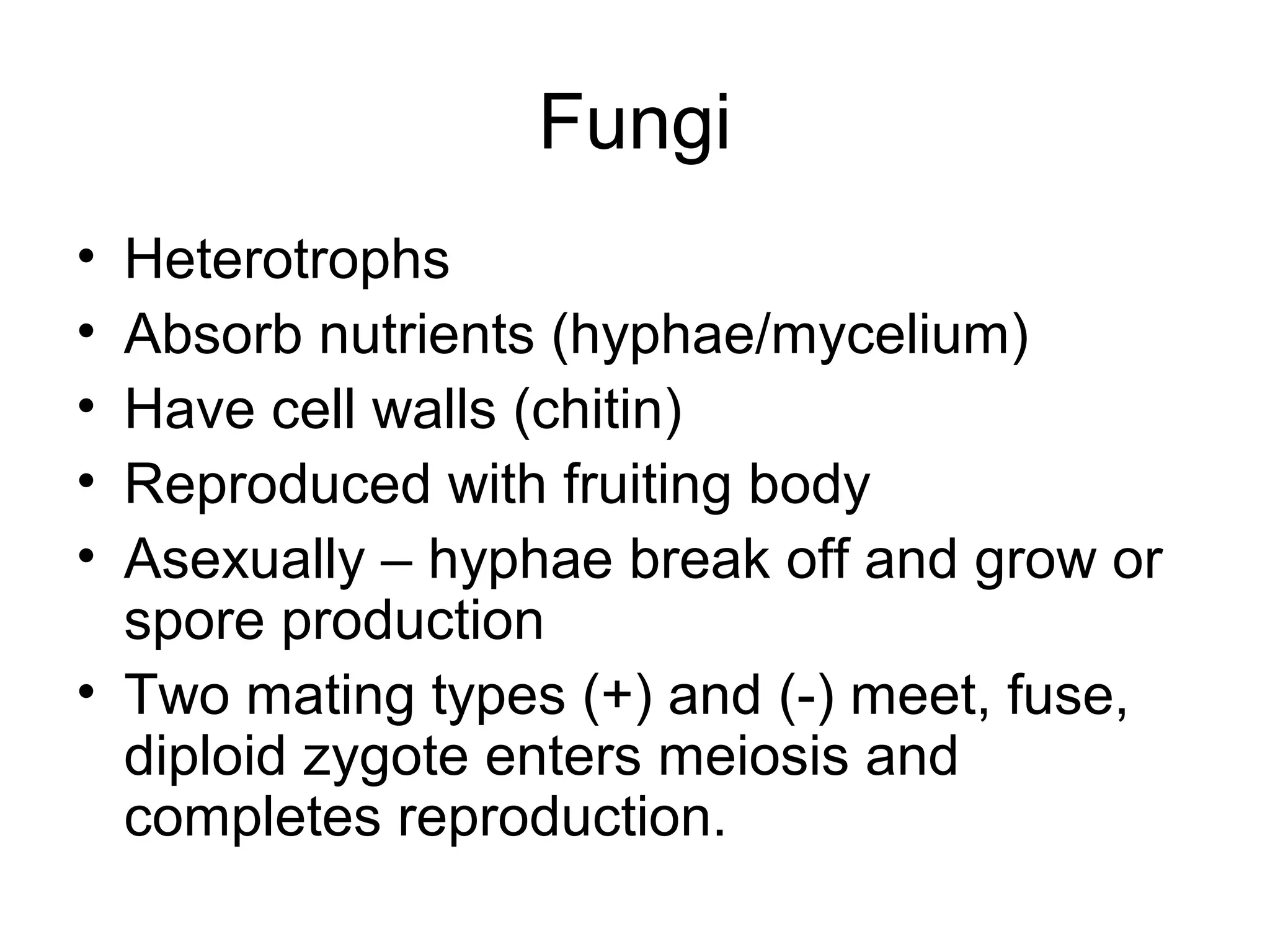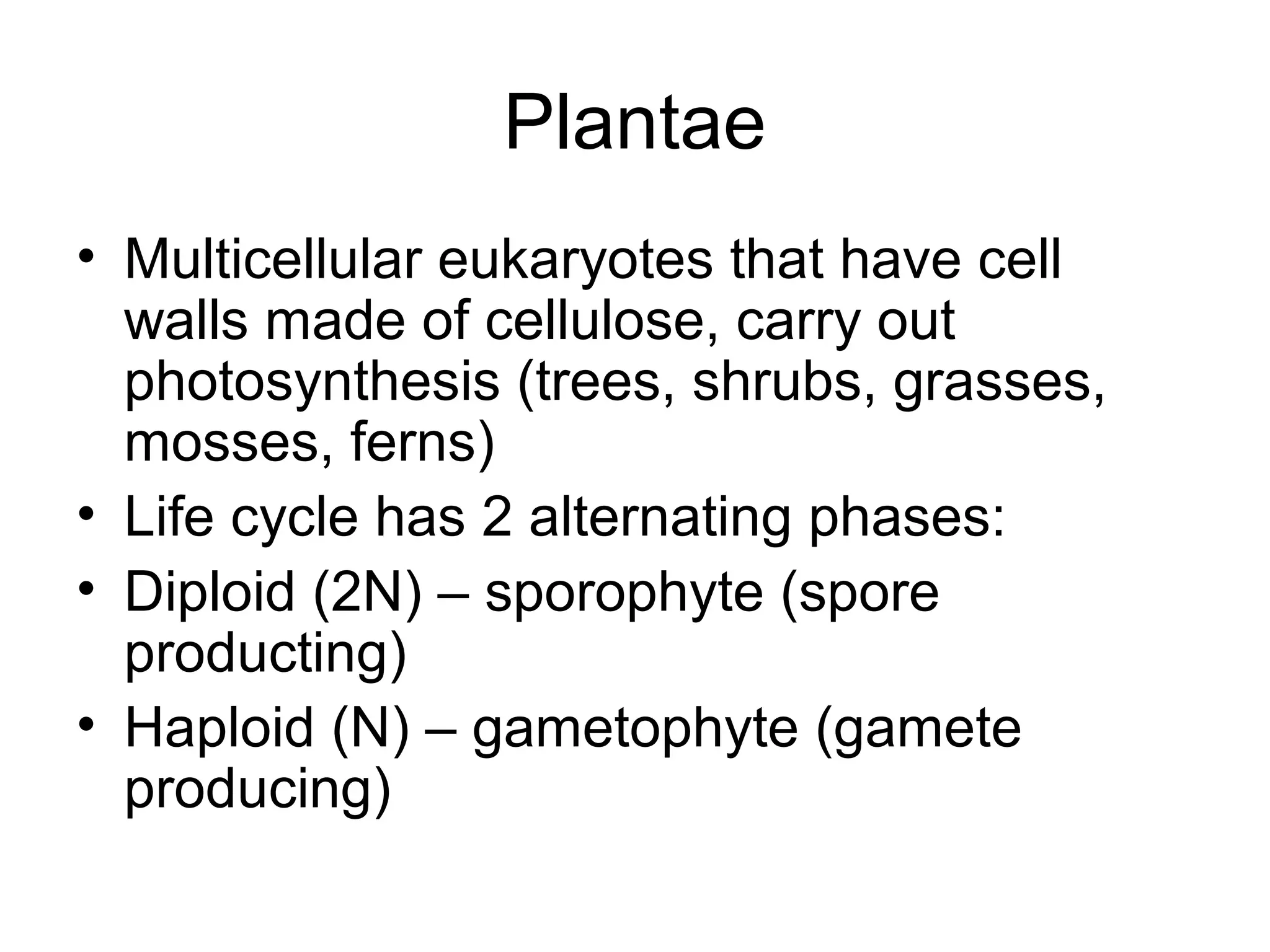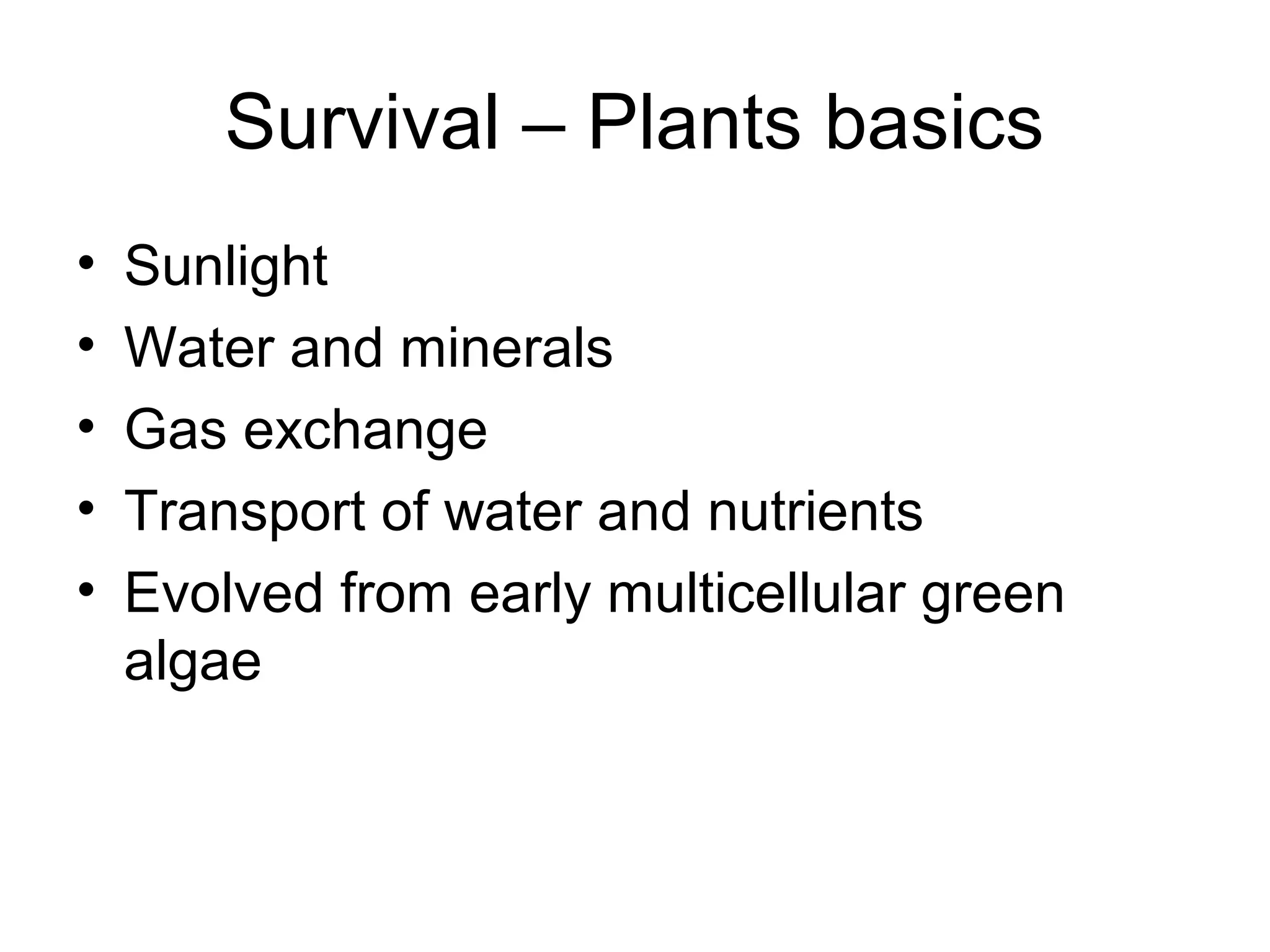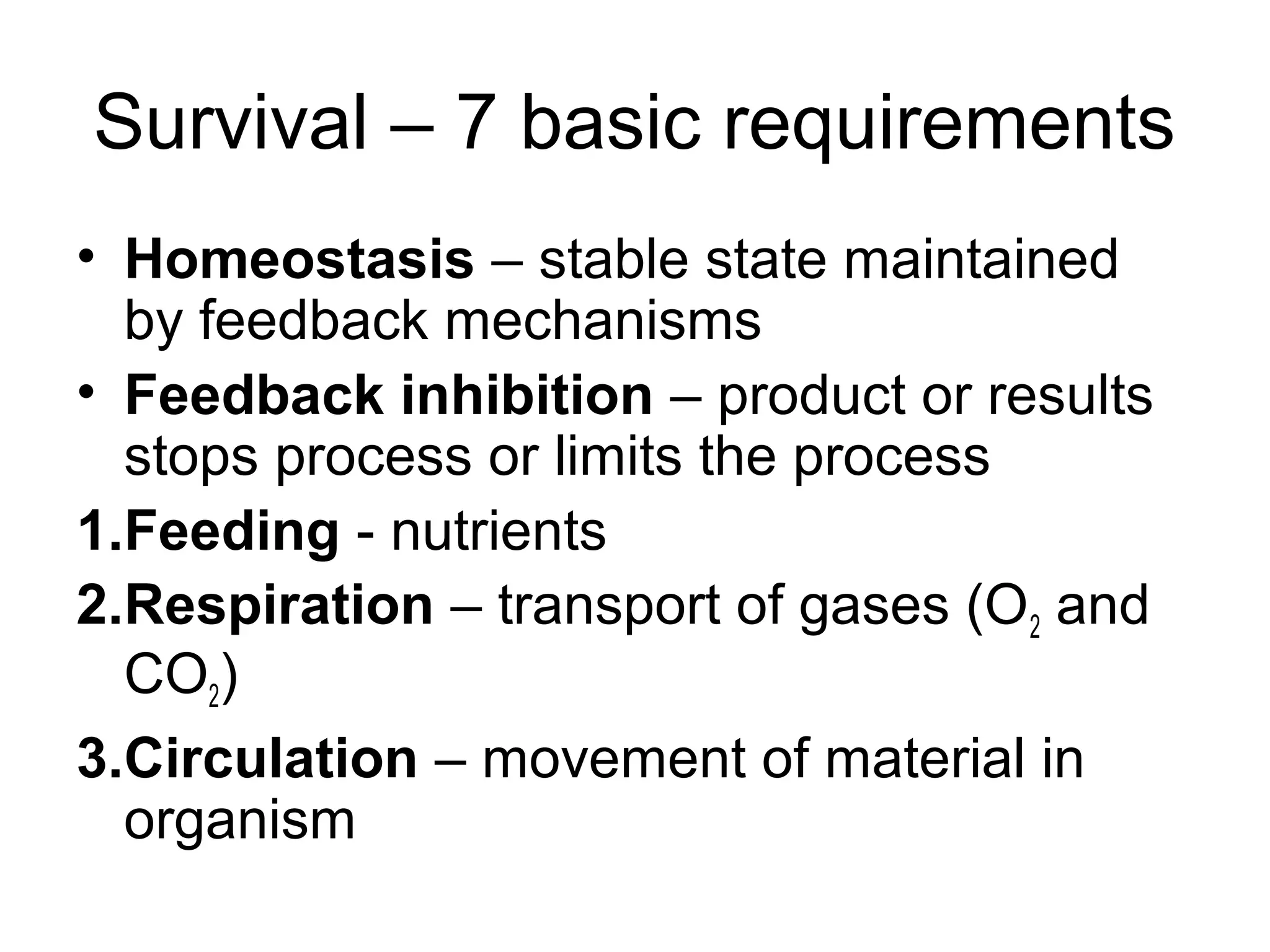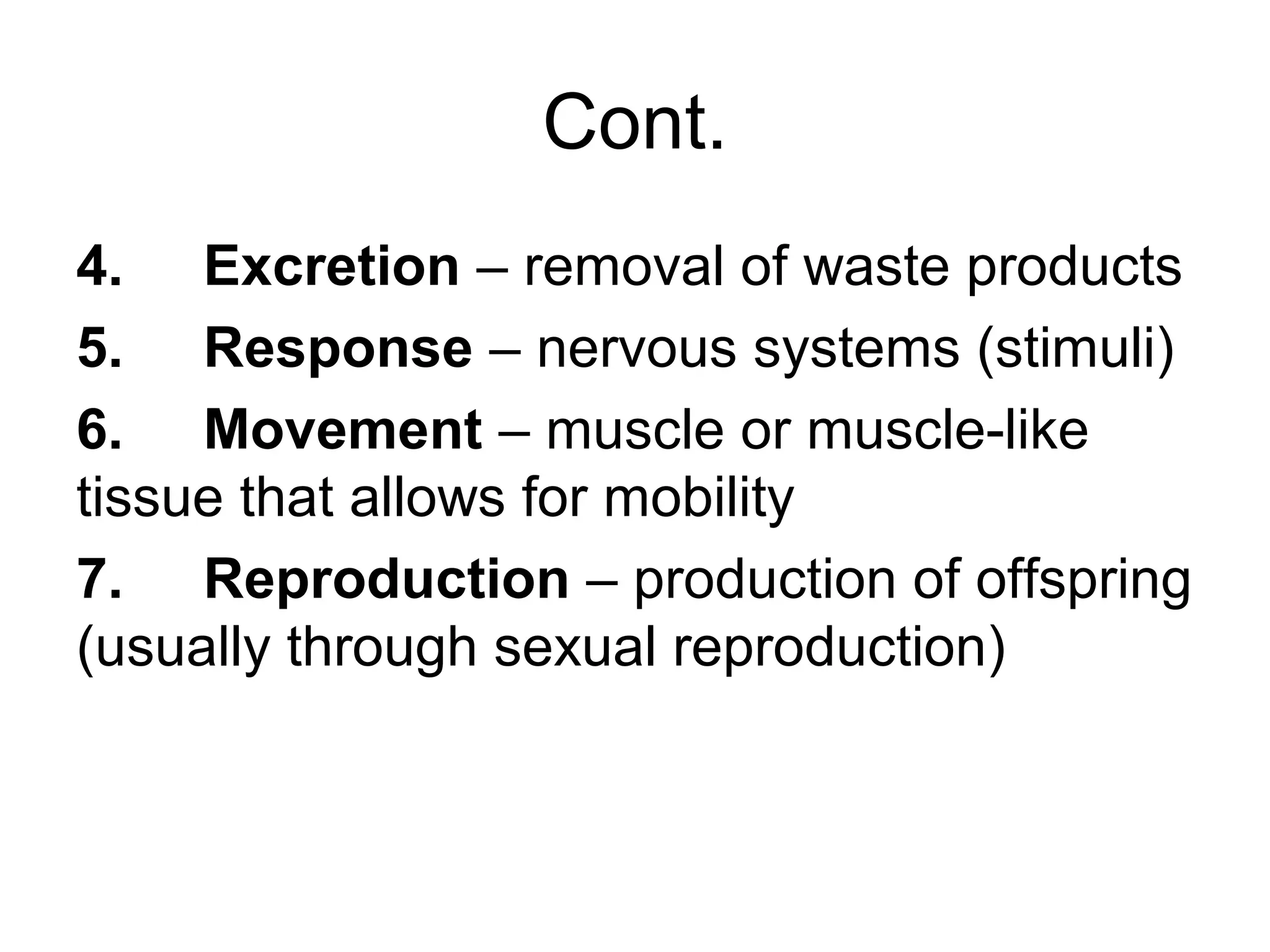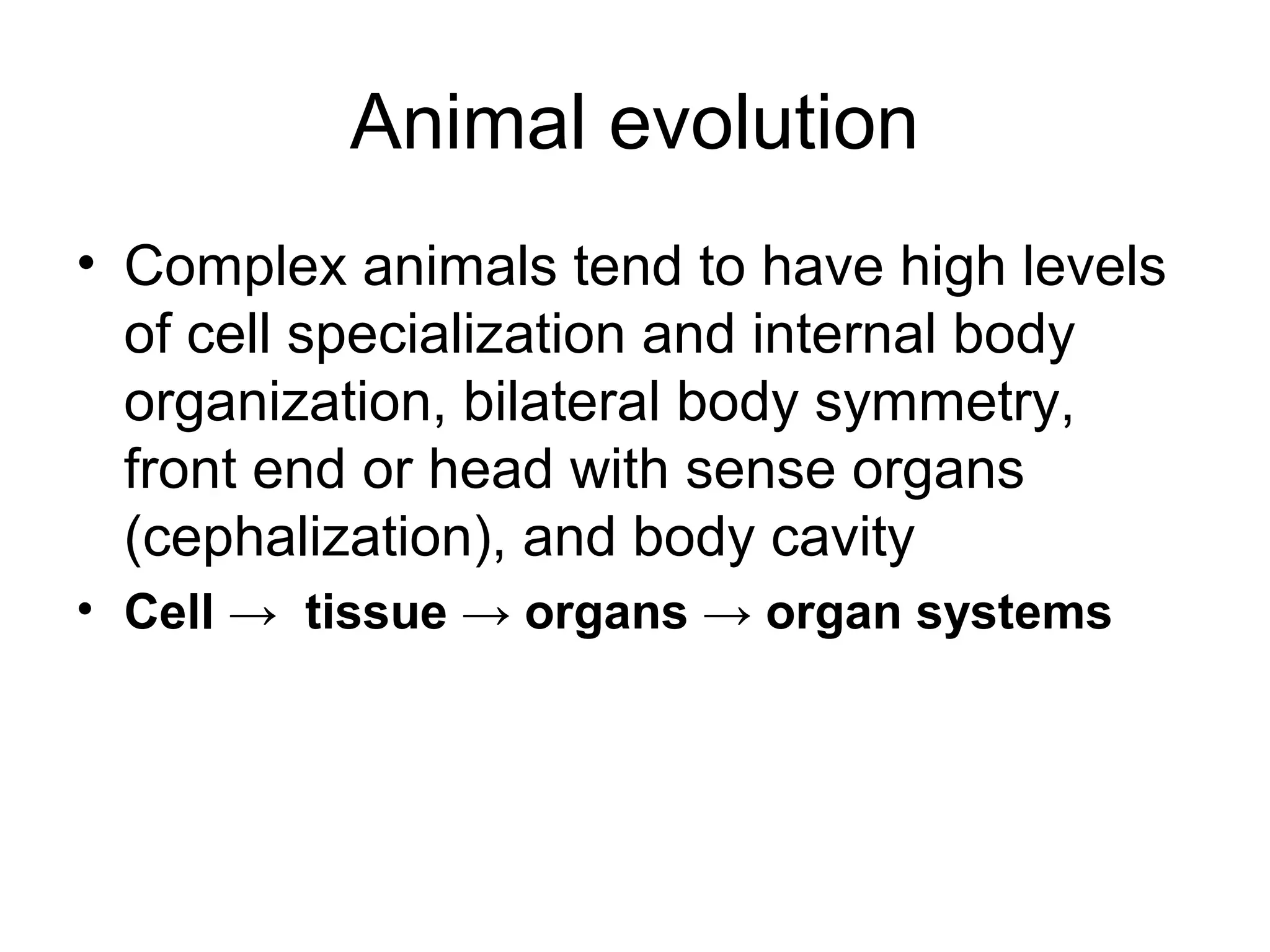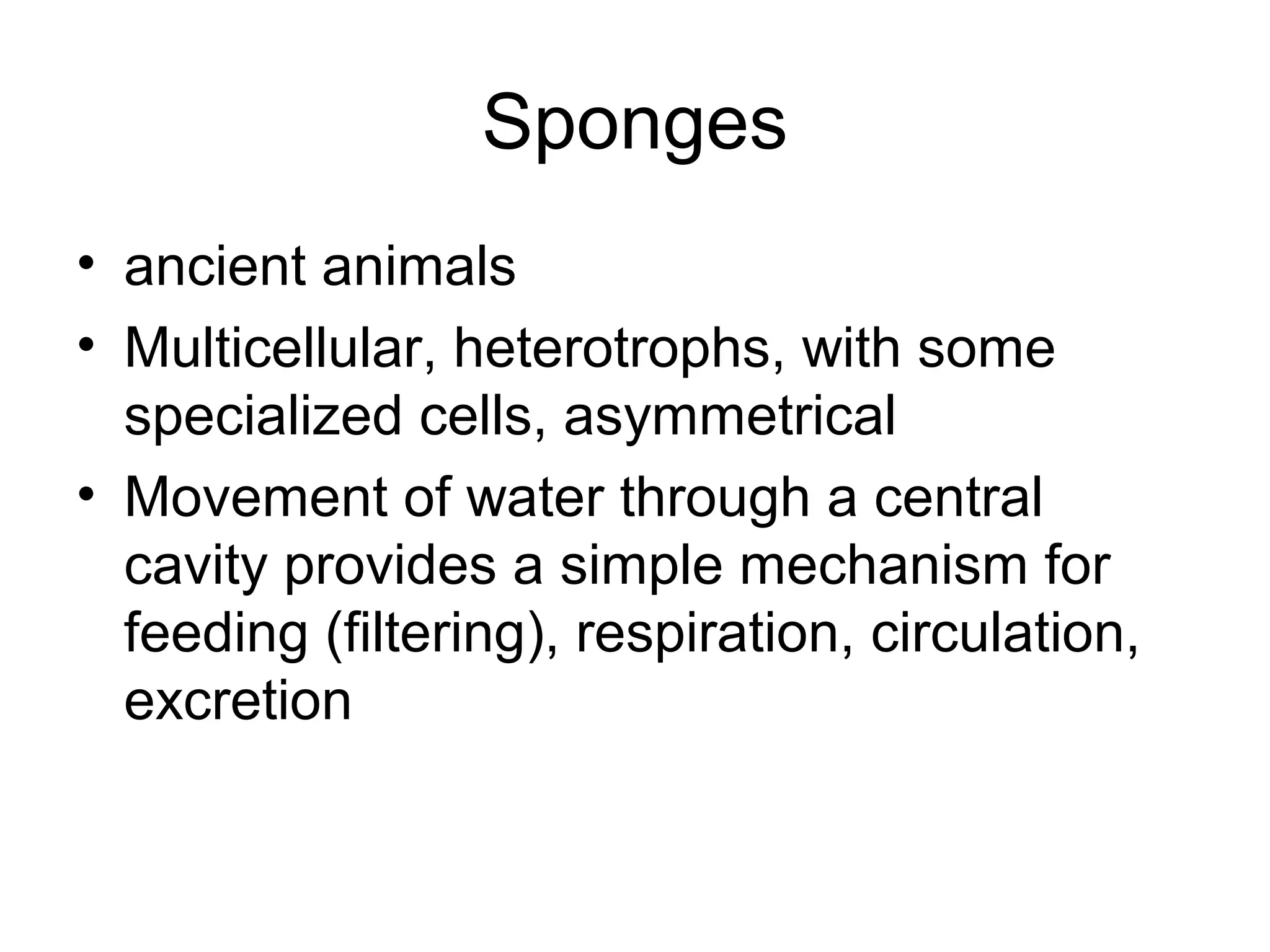This document provides an overview of biological classification systems and kingdoms. It discusses:
1) Carolus Linnaeus' hierarchical classification system with 7 levels (species to kingdom); organisms were grouped based on visible similarities.
2) Evolutionary classification groups organisms based on evolutionary relationships and derived characters rather than just physical similarities.
3) Current systems recognize 6 kingdoms - Animalia, Plantae, Fungi, Protista, Archaea, and Bacteria. DNA comparisons help determine evolutionary relationships.
4) The kingdoms are described in brief, highlighting key distinguishing features of plants, animals, fungi, and protists.
